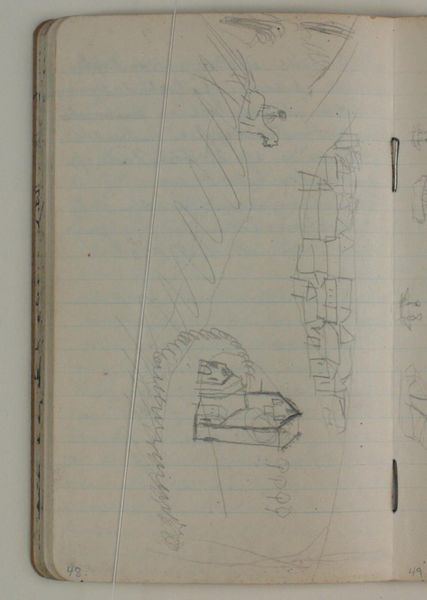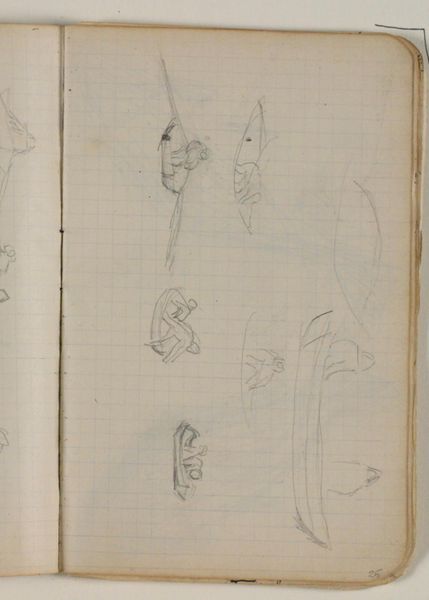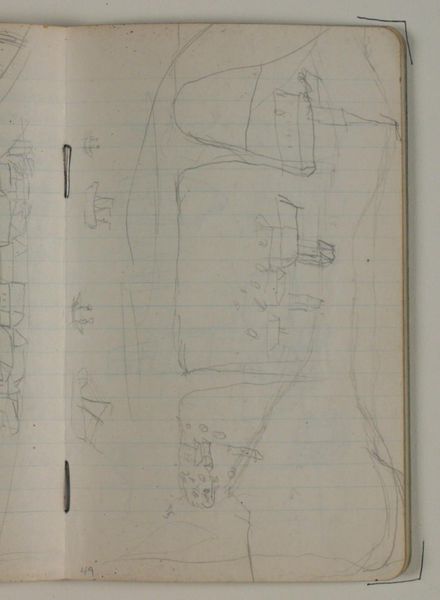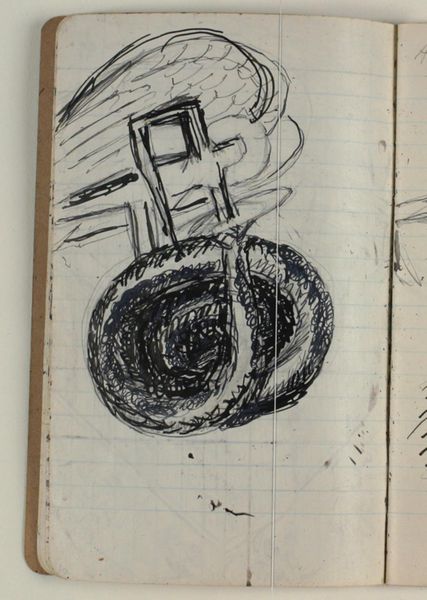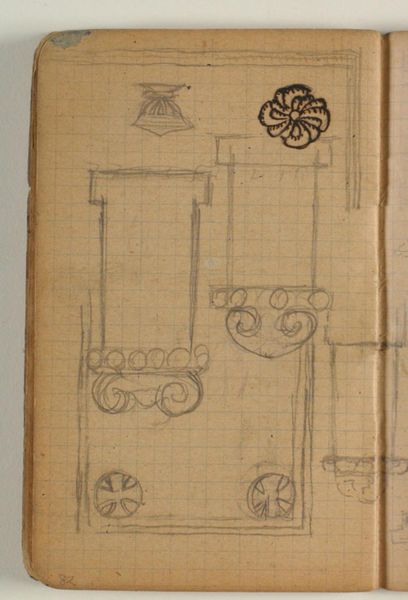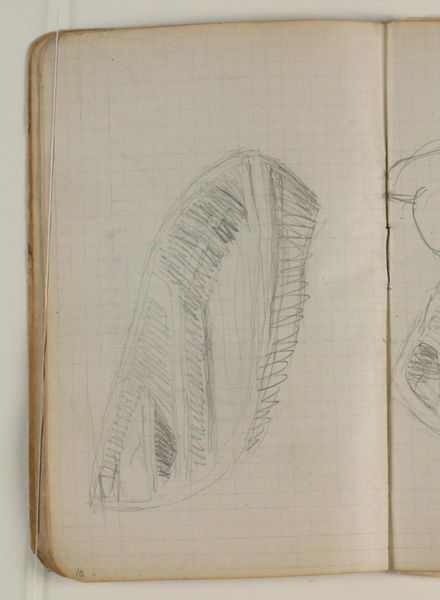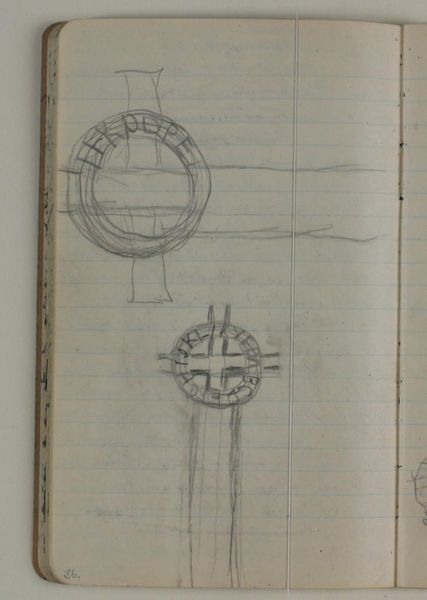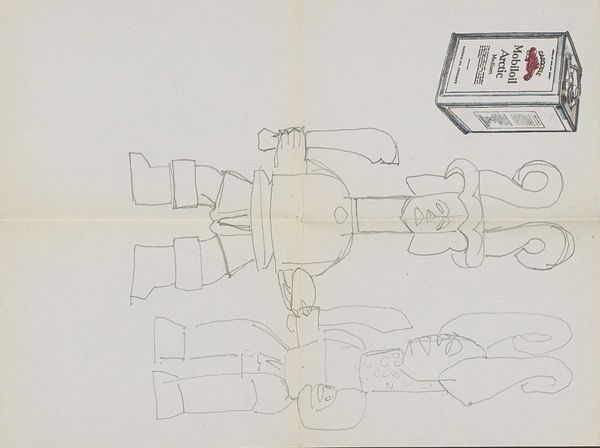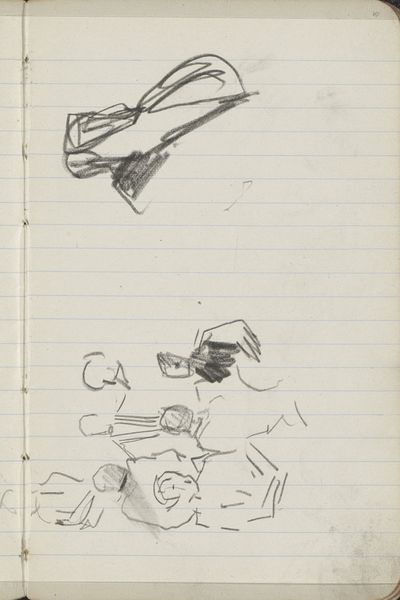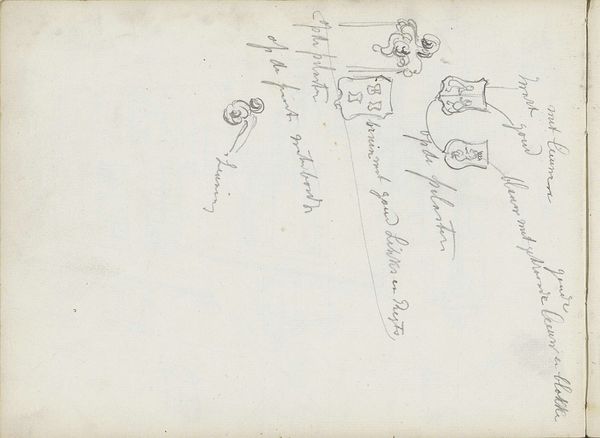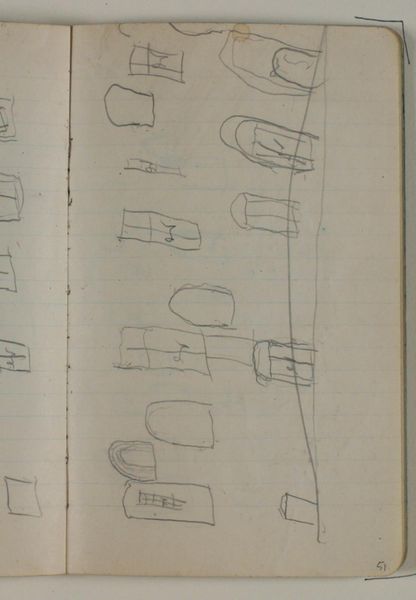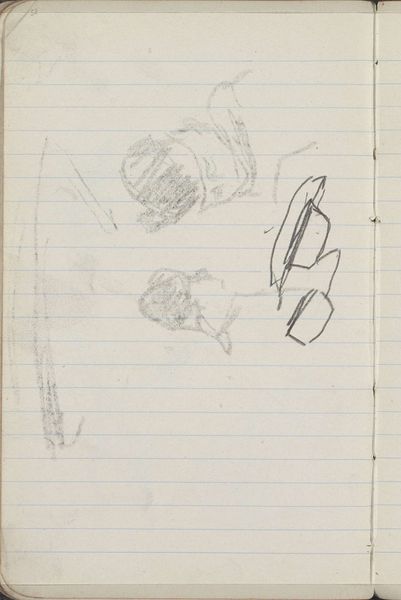
Forskellige tegninger (Af Anna Larsen Stevns ?) 1933 - 1934
0:00
0:00
drawing, paper, pencil
#
drawing
#
paper
#
geometric
#
pencil
Dimensions: 175 mm (height) x 109 mm (width) (monteringsmaal), 175 mm (height) x 109 mm (width) (bladmaal)
Editor: This drawing from 1933-34, titled "Forskellige tegninger" attributed to Anna Larsen Stevns or possibly Niels Larsen Stevns, shows a few studies of, what appear to be, vessels. I find the sketch in the middle to be most engaging. How do you interpret this work, thinking about its potential cultural relevance? Curator: It's fascinating to consider the historical and social context of these sketches, especially during the interwar period. I'm immediately drawn to the suggestion that these objects reference archaeological finds. What narratives about cultural heritage and identity might they be engaging with? Notice the 'sculpture' in the center; it may be referencing antiquity and is juxtaposed between images of possible vessels. What relationship do you think Stevns (or Stevns?) may have had to the items pictured? Editor: That's an interesting point. Perhaps this is an early comment on preserving antiquities and making historical works culturally relevant. How can a seemingly simple sketch hold such weighty commentary? Curator: Exactly. The very act of sketching can be a form of preservation, a way of engaging with and understanding history. But let’s not overlook the political implications either. Consider how the construction of national identity often relies on a selective interpretation of the past. Could these drawings be subtly questioning whose history is being valued and why? Are the possible antiquities referencing historical relevance or colonialism? Editor: So the choice of subject, even in a quick sketch, becomes a statement in itself? I hadn't thought about it that way. I always viewed drawings as sort of devoid of cultural influence in a historical sense, almost absent of positionality. Curator: Precisely. It reminds us that no artwork exists in a vacuum. Every line, every form is potentially imbued with meaning that reflects broader social, political, and historical currents. Understanding this allows us to truly engage with art as a powerful form of communication and critique. Editor: It’s eye-opening to see how much a simple sketch can reveal about its time, if we look at it through the right lens. Thanks for sharing your expertise!
Comments
No comments
Be the first to comment and join the conversation on the ultimate creative platform.
